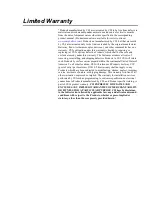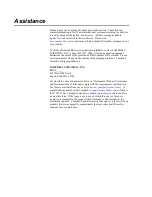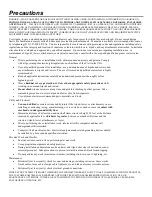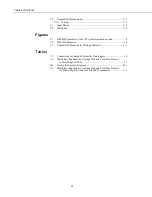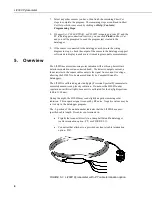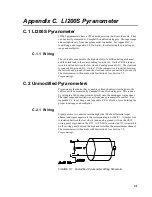
LI200X Pyranometer
7.
Select any other sensors you have, then finish the remaining
Short Cut
steps to complete the program. The remaining steps are outlined in
Short
Cut
Help
, which is accessed by clicking on
Help | Contents |
Programming Steps
.
8.
If
LoggerNet
,
PC400
,
RTDAQ
, or
PC200W
is running on your PC, and the
PC to datalogger connection is active, you can click
Finish
in
Short Cut
and you will be prompted to send the program just created to the
datalogger.
9.
If the sensor is connected to the datalogger, as shown in the wiring
diagram in step 6, check the output of the sensor in the datalogger support
software data display to make sure it is making reasonable measurements.
5. Overview
The LI200X measures incoming solar radiation with a silicon photovoltaic
detector mounted in cosine-corrected head. The detector outputs current; a
shunt resistor in the sensor cable converts the signal from current to voltage,
allowing the LI200X to be measured directly by Campbell Scientific
dataloggers.
The LI200X is calibrated against an Eppley Precision Spectral Pyranometer to
accurately measure sun plus sky radiation. Do not use the LI200X under
vegetation or artificial lights, because it is calibrated for the daylight spectrum
(400 to 1100 nm).
During the night, the LI200X may read slightly negative incoming solar
radiation. This negative signal is caused by RF noise. Negative values may be
set to zero in the datalogger program.
The –L portion of the model number indicates that the LI200X has a user-
specified cable length. Its cables can terminate in:
•
Pigtails that connect directly to a Campbell Scientific datalogger
(cable termination option –PT; see FIGURE 5-1).
•
Connector that attaches to a prewired enclosure (cable termination
option –PW).
FIGURE 5-1. LI200X Pyranometer with –PT cable termination option.
4



